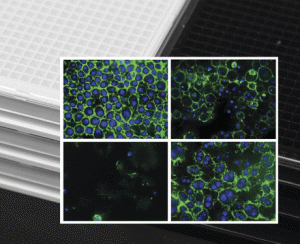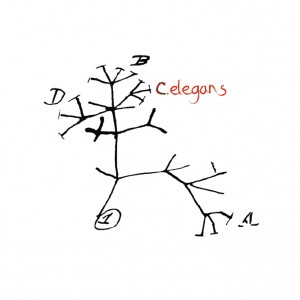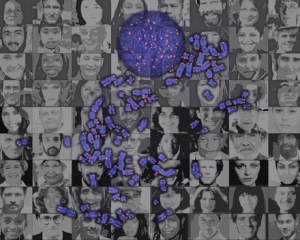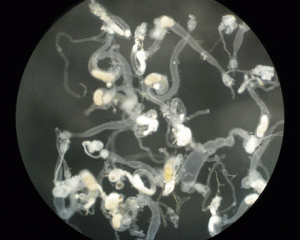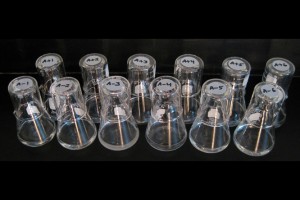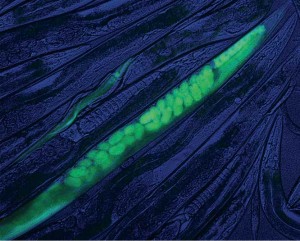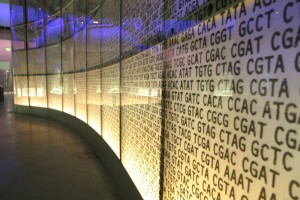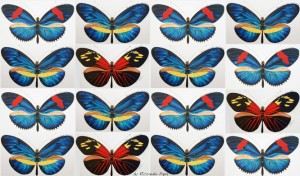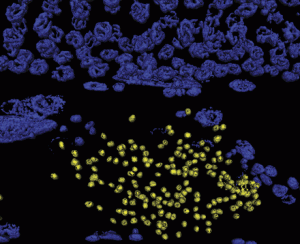Enter your address to receive notifications about new posts to your email.
Search results for genomics
(221 results)
-
New in G3: transcriptomics, temperature-sensitive yeast, and TALENs
Check out the September issue of G3! Investigations SWEEP: A Tool for Filtering High-Quality SNPs in Polyploid Crops Josh P. Clevenger and Peggy Ozias-Akins G3 September 2015 5:1797-1803; Early Online July 6, 2015, doi:10.1534/g3.115.019703 Abstract | Full Text | Full Text (PDF) | Supporting Information Comparative Transcriptome Analysis of the Cosmopolitan Marine Fungus Corollospora maritima Under Two…
-
In Memoriam: Bill Gelbart
GSA was saddened to learn about the passing of William Gelbart, a long-time member of the Society, former member of the GSA Board of Directors, former editor for GENETICS, and the 2010 recipient of GSA’s George W. Beadle Award for contributions to the community of genetics researchers. Bill was professor of molecular and cellular biology…
-
The new genomic world of wild worms
Mark Blaxter (Institute of Evolutionary Biology, University of Edinburgh) reports on the “Caenorhabditis Genomes Project” workshop at GSA’s recent 20th International C. elegans Meeting. Caenorhabditis elegans, affectionately referred to as “the worm,” is one of the prettiest and most informative of the model organisms. It is see-through, has a simple lifecycle and a remarkably simple anatomy,…
-
August GENETICS Highlights
The August issue of GENETICS is out now! Check out the Highlights below or the full Table of Contents here. ISSUE HIGHLIGHTS Characterizing race/ethnicity and genetic ancestry for 100,000 subjects in the genetic epidemiology research on adult health and aging (GERA) cohort, pp. 1285–1295 Yambazi Banda, Mark N. Kvale, Thomas J. Hoffmann, Stephanie E. Hesselson, Dilrini Ranatunga, Hua Tang, Chiara Sabatti, Lisa…
-
New in G3: peanuts, peas, & dates
Check out the July issue of G3! INVESTIGATIONS Multiple Conserved Heteroplasmic Sites in tRNA Genes in the Mitochondrial Genomes of Terrestrial Isopods (Oniscidea) Christopher H. Chandler, Myriam Badawi, Bouziane Moumen, Pierre Grève, and Richard Cordaux G3 July 2015 5:1317-1322; Early Online April 24, 2015, doi:10.1534/g3.115.018283 Abstract | Full Text | Full Text (PDF) | Supporting…
-
GSA member Leonid Kruglyak honored with ASHG’s Curt Stern Award
GSA member and frequent GENETICS and G3 author Leonid Kruglyak has been honored by the American Society of Human Genetics (ASHG) with its 2015 Curt Stern Award. The award recognizes genetics and genomics researchers who have made significant contributions to the field in the first ten years of an independent research career. Kruglyak is…
-
G3 Meeting Report: Experimental Approaches to Evolution and Ecology Using Yeast and Other Model Systems
Directly observing evolution in nature is often impossible. But biologists who use experimental systems to study these processes have the luxury of observing the fine details directly, controlling the conditions, and even replicating the results. In the age of genomics, experimental approaches to ecology and evolution have become particularly powerful for genetic model systems, including…
-
Worm101: Caenorhabditis elegans educational Primer
In time for the 20th International C. elegans Meeting, GENETICS has published the next in its series of model organism education Primers. Ann Corsi, Bruce Wightman, and Marty Chalfie introduce Caenorhabditis elegans and the many features that make it an outstanding experimental system. The authors describe the basic biology, genetics, anatomy, genomics, ecology, and evolution…
-
Turning spit and data into treasure
By the time President Obama announced the Precision Medicine Initiative in January 2015, the Genetic Epidemiology Research on Adult Health and Aging (GERA) cohort was already a trailblazing example of this new approach to medical research. GERA is a group of more than 100,000 members of the Kaiser Permanente Medical Care Plan who consented to…
-
The molecules behind mimicry
The vibrant passion-vine butterfly species Heliconius erato doesn’t taste as good as it looks. The flesh of this South and Central American species accumulates toxic compounds to discourage would-be predators, who quickly learn to associate the butterflies’ unpleasant taste with their bold red warning colors and patterns. But H. erato isn’t the only species that…
-
New in G3: Mosquitoes, cotton, & CYCLoPs
Check out the June issue of G3! MEETING REPORT Meeting Report on Experimental Approaches to Evolution and Ecology Using Yeast and Other Model Systems Audrey P. Gasch and Gaël Yvert G3 June 2015 5:1021-1023; Early Online April 22, 2015, doi:10.1534/g3.115.018614 Full Text | Full Text (PDF) INVESTIGATIONS Analysis of RNA Interference Lines Identifies New Functions…


